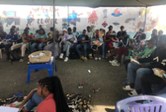Global Transboundary E-waste Flows Monitor 2022
Faster downloadPublished Year: 2022

Language: en
Summary: E-waste is one of the fastest-growing waste streams. In 2019, the world generated 53.6 Mt of e-waste – an average of 7.3 kg per capita. E waste generation is expected to increase to 74.7 Mt in 2030 and reach as much as 110 Mt in 2050, unless we modify our practices. The e-waste topic found its way into the public perception via alarming reports – e.g. a report by the Basel Action Network in the early 2000s (BAN 2005) – accompanied by initial studies illustrating the need for more thorough data gathering and research, including a study produced by United Nations University. Documentaries also showed the primitive harvesting of some valuable components, such as gold or copper, from printed circuit boards or cables through open acid baths or burning. Workers obscured in toxic smoke leave us with no doubts regarding the environmental and health impacts of such practices. The global South has been called by the international community the graveyard of the global North’s luxury products, assuming that most e-waste generated is shipped there, supported by some reports noting that 80% of total e-waste is shipped across country borders. Quantifying these shipments is difficult, as a number of studies have illustrated, due to a grey-zone in business when nonfunctional used electronics are shipped for reuse (with individuals claiming that the electronics can still be repaired) or even in illegal situations when non-repairable and non-reusable equipment is shipped, only to prevent recycling costs in countries with strict e-waste legislations. Therefore, the real magnitude of this issue remains unclear, though the impacts of informal treatment in some recipient countries are unquestionably significant. As well, most of these countries contribute to the issue of environmental and health harm through informal treatment by domestically generating mountains of e-waste. This study is part of the E-waste Monitors series (ewastemonitor.info), which has been developed since 2014 by the Sustainable Cycles (SCYCLE) Programme – which has just completed its transition from UNU to UNITAR. SCYCLE and its closest partners, such as ITU, UNIDO, and UNEP, follow international guidelines on e-waste statistics, containing the most applied classifications as well as correspondence tables of those classifications.








